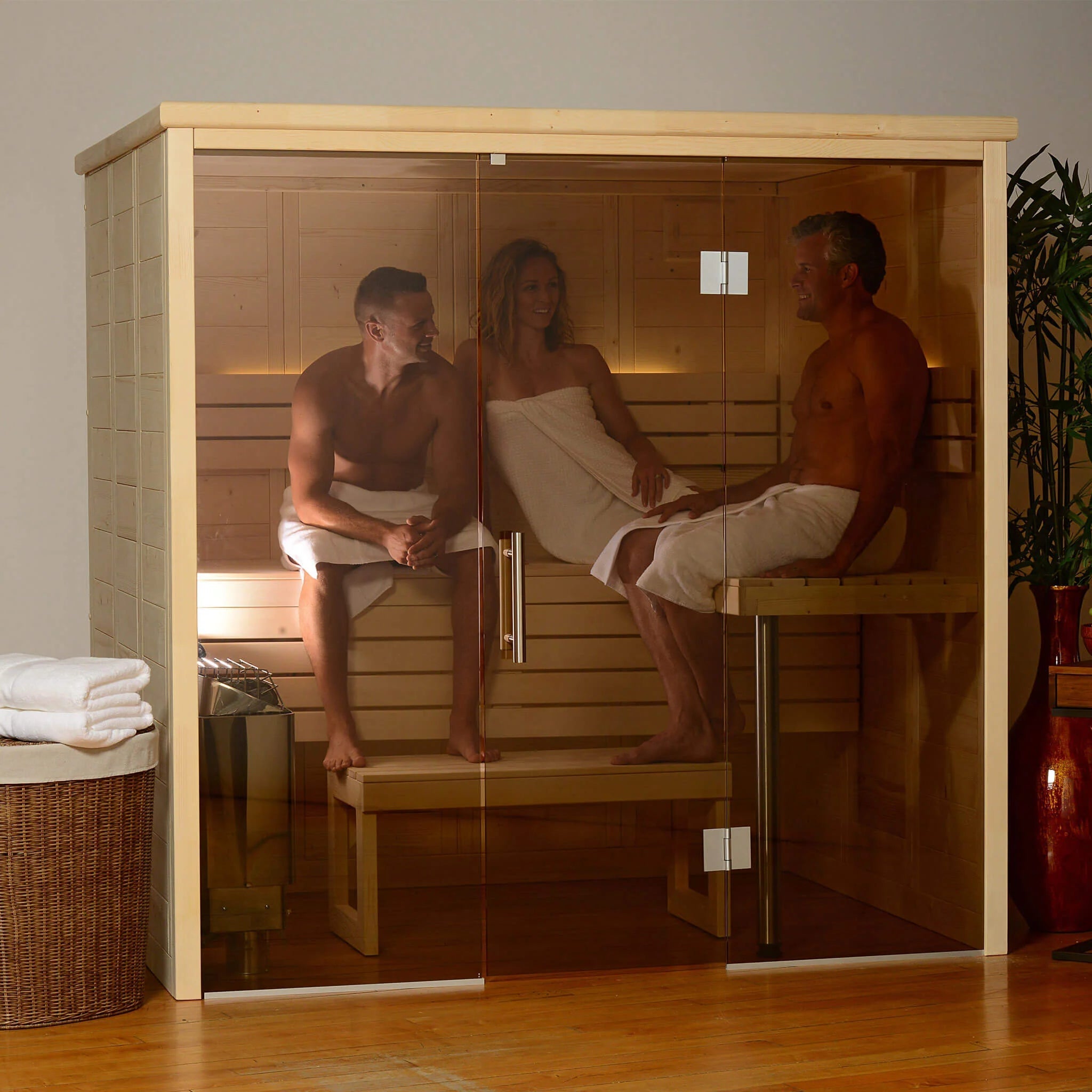Traditional Sauna - Truths
Table of Contents5 Easy Facts About Traditional Sauna DescribedExamine This Report on Traditional SaunaUnknown Facts About Traditional SaunaThe Best Strategy To Use For Traditional SaunaThe 8-Minute Rule for Traditional Sauna
Many of the weight lost in a sauna is water loss and is re-gained upon rehydrating. Without a question sauna can be an essential component of a healthy weight loss program. To take a look at the differences between standard and IR saunas, I will certainly separate these right into proven, academic, and made distinctions.Thus, the best point in the saunawhich goes to the ceiling straight over the sauna heateris generally between 185 and 190 F. Claims that a standard sauna surpasses 200 F is just not true and not appropriate for electrical saunas offered in the US. The temperature for a far-infrared sauna is typically set between 120 and 140 F; however, unlike the traditional sauna, the goal in and IR area is not to attain a high temperature level.

When a traditional sauna has actually been properly heated, the sauna wall surfaces are cozy, the air temperature has actually accomplished set temperature level and the rocks are super warmed. As an intriguing side note, the warmed walls and the rocks are emitting far-infrared warm, incorporated with the heated air, to develop an "covering warmth".
The Greatest Guide To Traditional Sauna
When the heat is accomplished, the components cycle on and off to preserve the heat. A lot of traditional sauna customers appreciate pouring water over the rocks to produce vapor to raise sauna moisture degrees. The advantages of putting water over the rocks include: making the area more comfortable, moistening the nasal flows, and permitting the use of aromatherapy by mixing necessary oils with the water.

When the power goes into the body, it causes the body temperature level to raise and inevitably imp source causes sweating. In an infrared sauna it is essential for the emitters/heaters to continue to be on nearly regularly. Given that there is no mass of rocks to retain heat, the sauna will certainly cool down if the emitters turned off.
What Does Traditional Sauna Mean?
As discussed over, the sauna bather in an infrared space intends to place himself in try these out front of running emitters to get optimal take advantage of the heat. The heating time for the 2 rooms can be really various, depending on exactly how the rooms are made use of. For a standard sauna, a bather ought to allow 30-40 mins for the area to accomplish a desired temperature level and to appropriately pre-heat the rocks.

A well built sauna will generally achieve a temperature level of 150-160 F in concerning 30-40 minutes (Traditional Sauna). For hotter temperatures, the space may need to warm for a longer duration. When the room accomplishes established temperature level, the heater will certainly cycle on and off, usually running about 50% of the time. The shielded wall surfaces and the heated rocks will maintain the space hot and at secure temperatures.
To some, 15 mins was "thrown away" while the infrared energy heated up the timber panels instead than warming a body, while others locate a pre-heated area to be much more comfy and believe an elevated starting temperature is required to start perspiring. The length of suggested use for every space is about the very same (10-15 mins per session); nonetheless, as a result of the reduced air check these guys out temperatures and the ability to really feel the results of infrared warmth much faster than a standard sauna, it is not uncommon for an individual to invest a total of 20-30 mins in an infrared sauna.
Traditional Sauna for Beginners

The typical cost per kWH of power in the U.S. is around $0.11, so a 4.5 kW heater will certainly cost around $.50 to compete one hour, if the heater runs continually for one hour. Commonly a sauna heater will compete 75% of the initial hour and 50% of succeeding hours on because the aspects cycle once the established temperature level is attained.
A two individual far-infrared area is usually physically smaller sized than a conventional sauna, typically about 4' x 4' or smaller sized. The IR home heating system is generally 1.5-1.7 kW utilizing a 120 volt 15 amp plug-in solution. Given that the room can be made use of sooner than a sauna room, we will assume the area is used for to of an hour including heat up time.
There is a hardly ever talked about distinction in the social experience in between the 2 areas. While our culture has lost some of the social benefit of the conventional sauna experience, it can be really socially fulfilling (Traditional Sauna). From family members time in the sauna, to heart-felt discussions with substantial others, to sauna partiesthe traditional sauna experience can result in intimate interacting socially
Getting My Traditional Sauna To Work
Most greater end infrared rooms include colored light therapy, audio systems and full-glass fronts.